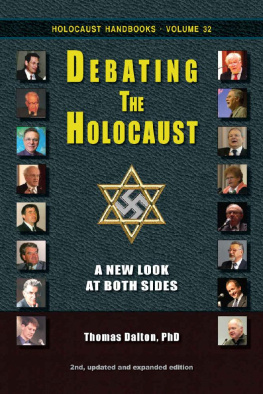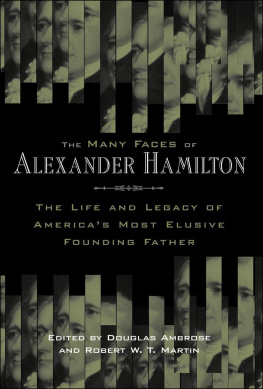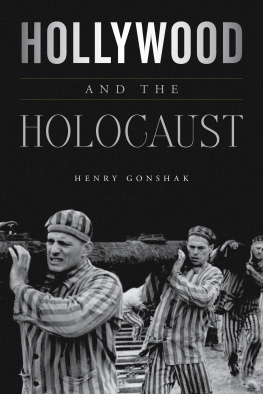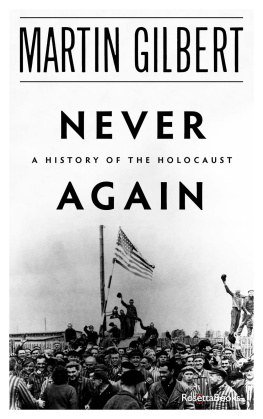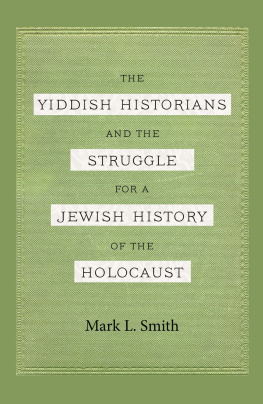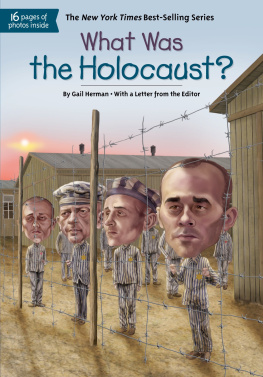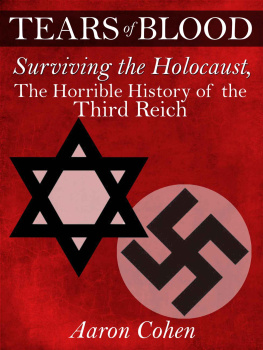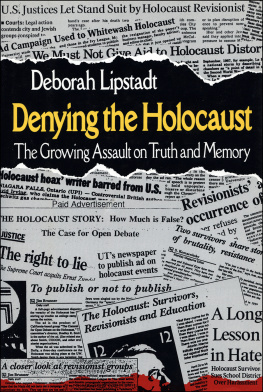Debating
the
Holocaust
A New Look at Both Sides
By Prof. Dr. Thomas Dalton

Castle Hill Publishers
P.O. Box 243, Uckfield, TN22 9AW, UK
August 2015
HOLOCAUST HANDBOOKS, vol. 32:
Thomas Dalton:
Debating the Holocaust: A New Look at Both Sides.
2nd, revised and expanded edition.
Uckfield, East Sussex: Castle Hill Publishers
PO Box 243, Uckfield, TN22 9AW, UK
August 2015
ISBN10: 1-59148-086-8 (print edition)
ISBN13: 978-1-59148-086-0 (print edition)
ISBN13 ePub: 978-1-59148-110-2 (electronic edition)
ISSN: 1529-7748
Published by Castle Hill Publishers
Manufactured in the United States of America and in the UK
2015 by Thomas Dalton
Distribution: Castle Hill Publishers, PO Box 243, Uckfield, TN22 9AW, UK, https://shop.codoh.com
Set in Times New Roman
Cover Illustration: Left, top to bottom: John C. Ball, Friedrich P. Berg, Arthur R. Butz, Robert Faurisson, Jrgen Graf, David Irving, Carlo Mattogno, Germar Rudolf. Right, top to bottom: Wolfgang Benz, Christopher R. Browning, Martin J. Gilbert, Deborah E. Lipstadt, Raul Hilberg, Franciszek Piper, Michael B. Shermer, Robert J. van Pelt.
Table of Contents
Authors Preface to the Second Edition
The first edition of this book, published in 2009, underwent three initial printings, each with slight textual and layout modifications. The final version, marked Third printing, has sufficed for the past six years. But recent developments in the news, in world events and in the historiography of the Holocaust have necessitated a revised second edition of this book.
The general organization and chapter structure remain unchanged. The most significant revisions are as follows: Chapter 4 on the death matrix is now based on the 6 million overall death toll, rather than Raul Hilbergs estimate of 5.1 million. Correspondingly, working (orthodox) figures for five of the six death camps have also been significantly increased; Auschwitz remains largely unchanged. Also, the sections on the ghettos and on the Einsatzgruppen have been significantly expanded in order to give appropriate space to these two important aspects. Chapter 5 on Chelmno now includes reference to three important works on that camp that were not available for the first edition. The account of the Reinhardt excavations in Chapter 8 has been updated based on recent developments at those camps. Chapter 9 on Majdanek has been significantly modified to reflect the recent writings of current camp director Tomasz Kranz. In Chapter 11, the revisionist Holocaust estimate has been increased from 516,000 to 570,000, though this reflects no fundamental shift in outlook. Many of the statistics and factual data in Chapter 12 have been updated. And the epilogue has been significantly expanded.
Importantly, however, the general conclusion is unchanged: the traditional Holocaust story is deeply flawed, and its advocates continue to resort to lies, deception and heavy-handed oppression to stifle open discussion. Only an impartial and unbiased investigation can get to the root of the present debate. Here, as before, the reader is invited to be his own judge.
Thomas Dalton
1 May 2015
Introduction
This is a book about the Holocaust and about two competing views of that event. On the one hand we have the traditional, orthodox view: the six million Jewish casualties, the gas chambers, the cremation furnaces and mass graves. We know about the death camps. We are told about incriminating documents, photographs and hard evidence. Countless books and films reiterate the conventional view. Historians can call on thousands of surviving witnesses to give us eyewitness accounts. Traditionalists have the weight of history on their side.
On the other hand, there is a small, renegade band of writers and researchers who refuse to accept large parts of this story. They explicitly challenge the conventional view of history. Researchers who do such work are generally known as revisionists . They seek to revise the orthodox account of some past event. Holocaust revisionists, however, are a special breed. They challenge not simply historians, but an entire infrastructure dedicated to maintaining and promoting the standard view. They present counter-evidence; they expose inconsistencies; they ask tough questions. And they are beginning to outline a new and different narrative.
Thus has emerged something of a debatea debate of historic significance. This is no peripheral clash between two arcane schools of thought regarding some minutia of World War II. It is about history, of course, but it also speaks to fundamental issues of our time: freedom of speech and press, the operation of mass media, manipulation of public opinion, political and economic power structures and the coercive abilities of the State. It is an astonishingly rancorous and controversial debate with far-reaching implications.
Most of the public is only dimly aware of this debate, if at all. Nearly everyone knows that six million Jews were killed by the Nazis, and that gas chambers were used in the killing. But few have any idea about the origins of this story, its rationale and its justification. Fewer still know of the serious questions that have been raised against the traditional view; if they have heard of them, it is in the context of a few right-wing neo-Nazi anti-Semites who are trying to attack the Jews by questioning the Holocaust. And not more than a handful of individuals truly understand the depth of the revisionist attack on the mainstream view.
The fact that so few are aware of what may be called the Great Holocaust Debate is perhaps unsurprising. Much has been invested in the conventional story. Textbooks and encyclopedias have been written about it. Historians have staked their personal reputations on it. Politicians have passed laws defending it. And wealthy and powerful interest groups have good reasons to sustain it. In short, very few of those in positions of influence want to acknowledge any kind of legitimate debate. There is no incentive to publicize it and strong pressure to avoid it. Those in the public eye know that, should they broach this subject, they will suffer the consequences. Advertisers will drop out. Financial backers will disappear. They may be sued. They will lose access and perhaps their jobs. They will be shunned. They will be vilified. And it will all be legal.
Despite this overwhelming influence of orthodoxy, the many problems of the Holocaust story refuse to be suppressed. Time and time again, in small and often unexpected ways, cracks in the traditional view appear. A surprising admission, a foolish statement, a slip of the tongue, a blatant absurdity; and those troubling questions arise once again. Today, more people than ever suspect that all is not well with the standard view of the Holocausthence the need for a book such as this.
* * *
The Great Debate is marked by a striking partisanship. The traditional story is defended primarily by survivors, Jewish writers and researchers, and those who suffered at the hands of Nazi Germanyin other words, by people with a self-interest in sustaining the dominant view of a genocidal Nazi regime and an innocent and victimized Jewish people. Of the thousands of books on the subject, the vast majority are by Jewish authors. The revisionist perspective, by contrast, is promoted by a very small number of people: primarily Germans, people of German origin, and those inclined to be pro-German or anti-Jewishagain, not an unbiased group. Charges of lies, conspiracy and hoax are frequently launched by both sides. This leaves the average person in a quandary: he is faced with partisan advocates on both sides, and rarely, if ever, gets a complete and balanced picture.

